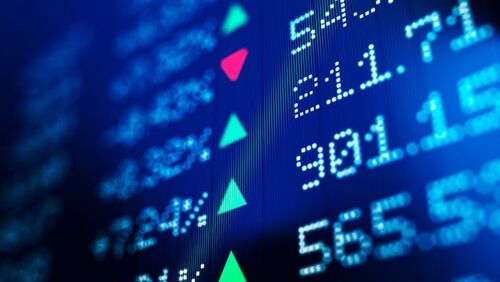What Qantas share buyback means for investors
By Nicola Field
Throughout the pandemic, Qantas shareholders had about as much fun as an economy-class passenger seated next to the lavatories.
COVID saw the company lose more than $25 billion in revenue. Dividends have been shelved. And the airline's share price ($6.36 at the time of writing) is still below its pre-COVID peak of $7.30.
For the true believers, however, riding out the turbulence may have paid off.
Qantas is confident it's back on track.
So confident, that the airline's $500 million share buyback, which commenced in March 2023, was upped this week by an extra $100 million. It follows last year's $400 million buyback program.
A share buyback can be confusing, so it's worth a closer look at what's going on.
Why would a company buy its own shares?
Share buybacks are not unusual. Recent years have seen big names including the Commonwealth Bank, NAB, Suncorp and Telstra announce buybacks of their own.
In general, companies buy back their own shares as a way of rewarding shareholders, while also boosting the share price.
The idea is that by reducing the number of shares in the market, a buyback increases the value of future dividends per shareholder, which helps to push up the share price.
There's an additional driver behind the Qantas share buyback.
The airline's 2022 annual report notes that one of the keys to surviving the pandemic was "the incredible support of Qantas' shareholders" - a reference to the $1.4 billion investors poured into Qantas capital raising in the early days of COVID to help the airline stay afloat.
Three years and $7 billion in statutory losses later, Qantas is on a fresh flight path. With a record $1.43 billion in pre-tax profit for the first half of the current financial year, and net debt below the company's target range, Qantas is now in a position to return some of that capital to investors.
Do I have to sell my shares?
Share buybacks can be either "on-market" (as in the case of Qantas) or "off-market".
An on-market buyback sees a company buy its own shares on the ASX in the ordinary course of trading.
With an off-market buyback the company approaches shareholders directly.
In either case, shareholders aren't obliged to sell, though to sweeten the deal the company may offer a premium price for its shares.
Criticisms of buybacks
Share buybacks, in particular the off-market variety, have attracted controversy. That's because the payment to shareholders has typically included a tax-friendly dividend rather than being a straight return of capital as is the case with on-market buy-backs.
For the tax office this has raised the possibility of missing out on capital gains tax revenue.
The 2022-23 Federal Budget attempted to remedy the issue by proposing that off-market buybacks by public companies be treated in the same way as on-market buy-backs. In other words, the money returned is all capital - there is no dividend component.
The proposed legislation is currently before the Senate.
Meanwhile, the Qantas buyback has raised a few eyebrows of its own.
While shareholders may have profited from the buyback activity, the airline received substantial government support through COVID - money that ultimately came from Australian taxpayers, plenty of whom haven't benefited from the scheme.
Looking ahead, Qantas expects to notch up a pre-tax profit between $2.425 billion and $2.475 billion this financial year.
With big plans to reinvest in the business, a dividend could still be a way off. But for Australians who retain a passion for our national carrier, the turnaround in Qantas Group's fortunes will bring tremendous relief that the flying kangaroo is reclaiming the skies, rather than going the way of the Tasmanian tiger.
Get stories like this in our newsletters.



